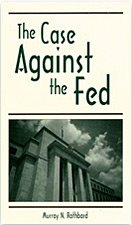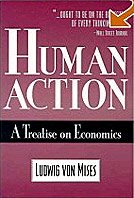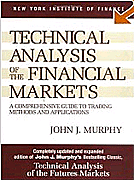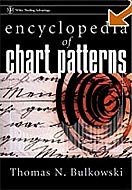A perfect storm for gold as mines left empty...
By Ambrose Evans-Pritchard
The Telegraph, London
Thursday, November 15, 2007
The era of "peak gold" has arrived.
Try as they might, miners cannot find enough ore at viable costs to replace their fast-depleting reserves, even if they dig miles into the centre of the earth.
"There's not much gold out there," said Gregory Wilkins, chief executive of top producer Barrick Gold.
"Global mine supply is going to decrease at a much faster rate than people generally believe. Many of the new mines that people are anticipating will never come into production," he told the RBC Capital Markets gold conference in London.
"There is a great disparity between the money spent on exploration and success. It's hard to say where the price of gold is going because we're in uncharted waters. I would say it could easily move to $900, $1,000, or beyond. It could happen very quickly," he said.
We know from the US Academy of Sciences that some 26 percent of all the copper and 19 percent of all the zinc that ever existed in the earth's crust has already been lost to mankind, mostly wasted in milling or smelting or buried in landfills.
Data has never been collected for gold, and the 5 billion ounces of gold mined over history is still around. Roughly 1 billion are in central bank vaults. But the same patterns of exhaustion are emerging.
South Africa's output is down to the lowest since 1932. Much of what remains elsewhere is locked up in no-go countries run by demagogues or serial expropriators.
"You don't put yourself in harm's way. It's a non-starter to invest in a country that takes your mine away from you," said Mr Wilkins.
"The list of countries where we won't go is getting longer. There's Venezuela, and all the countries in Latin America that are influenced by (Hugo) Chavez.
"In Ecuador they withdraw licences after they have been issued. You can't tolerate that kind of instability. Russia is another country where things are deteriorating," he said.
Kevin McArthur, chief executive of Goldcorp, said his group was not setting foot outside North America.
"We won't build a mine where we won't go on holiday. We're even tending to stay out of the US because that has some of the highest political risk in terms of mining investment," he said.
The gripe is that revisions to the 1872 Mine Act in the United States will add royalty costs and allow regulators to shut down projects on a whim.
Mr McArthur said global output was on a relentless slide. "We'll see four-digit gold. It will have to reach $2,500 an ounce to equal the 1980 record in today's terms, so we have a long way to go," he said
Gold reached a 27-year high of $846 an ounce in early November following rate cuts by the US Federal Reserve, though it has fallen back on profit taking.
Investors seem to be betting on a "Bernanke reflation," suspecting that the Fed will turn the liquidity tap back on to cushion the US property slump.
Tony Fell, chairman of RBC Capital Markets, said the world money supply has been growing by 5-10 percent while the stock of mined gold has been rising at 1.6 percent, creating a mismatch that must be covered.
Mr Fell says the total debt burden in the US has exploded to 340 percent of GDP, in stark contrast to the steady levels of around 150 percent of the postwar era.
It almost insures further dollar debasement. "We're in the very early phases of a prolonged bull market," he said.
RBC argues that the global dollar system known as Bretton Woods II is "coming apart at the seams" as Asian, Mideast, and Latin American states start to break their dollar links to avoid importing US inflation.
The result is to resurrect gold, which is fast regaining its role as the world's benchmark currency.
It was the last currency bust-up -- caused by America's attempt to the fight the Vietnam War and fund the Great Society without adequate taxes -- that lay behind the 1970s bull market in gold.
"The fact that monetary policy in the core was too loose for the periphery triggered the demise of Bretton Woods 1. The late 1960s saw first France and then Germany and Britain all start to swap their dollar reserves for gold. We may well be witnessing a similar situation today as price pressures build in the emerging world," RBC said in a new report.
However, the bank warned that gold was looking toppy after the blistering autumn rally and faced a likely selloff in coming weeks, perhaps to $725-$750.
India's gold-buying season is coming to an end with the Diwali Festival. The country accounts for 22 percent of world gold demand.
The level of speculative "long" positions on New York's Comex futures market has remained above 20 million ounces for five weeks in a row. This sort of pattern is typically followed by a sharp slide, although the global credit crunch and bank scares may change the game this time.
RBC says any correction is likely to be short, with gold probing record highs of $900 an ounce early next year.
Whether the gold mining shares will at last join the party is far from clear. Many have languished through the bull market, and some are trading well below levels reached when gold was half the price.
Costs are rising at $60 an ounce annually. They will average of $460 by next year. From tires to diesel fuel and the geologists' salaries, mine inflation is running at 15 percent.
Ian Cockerill, head of Gold Fields, said the industry had "shot itself in the foot" by touting production cash costs that were not even close to the real figure.
Hence the fury of shareholders left trying to understand how so many mines could have gone bust when alleged costs per ounce were half the spot price of gold.
"We've deluded ourselves and we've deluded investors by failing telling them about all the other bills we have to pay. Until we tell them the total cost per ounce, we'll never have credibility," he said.
RBC is betting that the gold mining shares will soon start to shine again, enjoying their famed leverage to the spot price.
At $1000 an ounce, it forecasts a share feast: Barrick up 65 percent, Newmont 80 percent, IAMGOLD 90 percent, NovaGold 90 percent, and Centerra 100 percent.
Purists will always prefer ingots of glistening metal.
* * *
The Telegraph, London
Thursday, November 15, 2007
The era of "peak gold" has arrived.
Try as they might, miners cannot find enough ore at viable costs to replace their fast-depleting reserves, even if they dig miles into the centre of the earth.
"There's not much gold out there," said Gregory Wilkins, chief executive of top producer Barrick Gold.
"Global mine supply is going to decrease at a much faster rate than people generally believe. Many of the new mines that people are anticipating will never come into production," he told the RBC Capital Markets gold conference in London.
"There is a great disparity between the money spent on exploration and success. It's hard to say where the price of gold is going because we're in uncharted waters. I would say it could easily move to $900, $1,000, or beyond. It could happen very quickly," he said.
We know from the US Academy of Sciences that some 26 percent of all the copper and 19 percent of all the zinc that ever existed in the earth's crust has already been lost to mankind, mostly wasted in milling or smelting or buried in landfills.
Data has never been collected for gold, and the 5 billion ounces of gold mined over history is still around. Roughly 1 billion are in central bank vaults. But the same patterns of exhaustion are emerging.
South Africa's output is down to the lowest since 1932. Much of what remains elsewhere is locked up in no-go countries run by demagogues or serial expropriators.
"You don't put yourself in harm's way. It's a non-starter to invest in a country that takes your mine away from you," said Mr Wilkins.
"The list of countries where we won't go is getting longer. There's Venezuela, and all the countries in Latin America that are influenced by (Hugo) Chavez.
"In Ecuador they withdraw licences after they have been issued. You can't tolerate that kind of instability. Russia is another country where things are deteriorating," he said.
Kevin McArthur, chief executive of Goldcorp, said his group was not setting foot outside North America.
"We won't build a mine where we won't go on holiday. We're even tending to stay out of the US because that has some of the highest political risk in terms of mining investment," he said.
The gripe is that revisions to the 1872 Mine Act in the United States will add royalty costs and allow regulators to shut down projects on a whim.
Mr McArthur said global output was on a relentless slide. "We'll see four-digit gold. It will have to reach $2,500 an ounce to equal the 1980 record in today's terms, so we have a long way to go," he said
Gold reached a 27-year high of $846 an ounce in early November following rate cuts by the US Federal Reserve, though it has fallen back on profit taking.
Investors seem to be betting on a "Bernanke reflation," suspecting that the Fed will turn the liquidity tap back on to cushion the US property slump.
Tony Fell, chairman of RBC Capital Markets, said the world money supply has been growing by 5-10 percent while the stock of mined gold has been rising at 1.6 percent, creating a mismatch that must be covered.
Mr Fell says the total debt burden in the US has exploded to 340 percent of GDP, in stark contrast to the steady levels of around 150 percent of the postwar era.
It almost insures further dollar debasement. "We're in the very early phases of a prolonged bull market," he said.
RBC argues that the global dollar system known as Bretton Woods II is "coming apart at the seams" as Asian, Mideast, and Latin American states start to break their dollar links to avoid importing US inflation.
The result is to resurrect gold, which is fast regaining its role as the world's benchmark currency.
It was the last currency bust-up -- caused by America's attempt to the fight the Vietnam War and fund the Great Society without adequate taxes -- that lay behind the 1970s bull market in gold.
"The fact that monetary policy in the core was too loose for the periphery triggered the demise of Bretton Woods 1. The late 1960s saw first France and then Germany and Britain all start to swap their dollar reserves for gold. We may well be witnessing a similar situation today as price pressures build in the emerging world," RBC said in a new report.
However, the bank warned that gold was looking toppy after the blistering autumn rally and faced a likely selloff in coming weeks, perhaps to $725-$750.
India's gold-buying season is coming to an end with the Diwali Festival. The country accounts for 22 percent of world gold demand.
The level of speculative "long" positions on New York's Comex futures market has remained above 20 million ounces for five weeks in a row. This sort of pattern is typically followed by a sharp slide, although the global credit crunch and bank scares may change the game this time.
RBC says any correction is likely to be short, with gold probing record highs of $900 an ounce early next year.
Whether the gold mining shares will at last join the party is far from clear. Many have languished through the bull market, and some are trading well below levels reached when gold was half the price.
Costs are rising at $60 an ounce annually. They will average of $460 by next year. From tires to diesel fuel and the geologists' salaries, mine inflation is running at 15 percent.
Ian Cockerill, head of Gold Fields, said the industry had "shot itself in the foot" by touting production cash costs that were not even close to the real figure.
Hence the fury of shareholders left trying to understand how so many mines could have gone bust when alleged costs per ounce were half the spot price of gold.
"We've deluded ourselves and we've deluded investors by failing telling them about all the other bills we have to pay. Until we tell them the total cost per ounce, we'll never have credibility," he said.
RBC is betting that the gold mining shares will soon start to shine again, enjoying their famed leverage to the spot price.
At $1000 an ounce, it forecasts a share feast: Barrick up 65 percent, Newmont 80 percent, IAMGOLD 90 percent, NovaGold 90 percent, and Centerra 100 percent.
Purists will always prefer ingots of glistening metal.
* * *
Labels: Ambrose Evans Pritchard, gold, mining, peak gold















![[Most Recent Quotes from www.kitco.com] [Most Recent Quotes from www.kitco.com]](http://www.kitco.com/images/live/t24_au_en_usoz_6.gif)
![[Most Recent Quotes from www.kitco.com] [Most Recent Quotes from www.kitco.com]](http://www.kitco.com/images/live/au_go_0030_ny.gif)
![[Most Recent Quotes from www.kitco.com] [Most Recent Quotes from www.kitco.com]](http://www.kitco.com/images/live/au_go_0365_ny.gif)
![[Most Recent Quotes from www.kitco.com] [Most Recent Quotes from www.kitco.com]](http://kitconet.com/charts/metals/silver/t24_ag_en_usoz_4.gif)

















0 ΣΧΟΛΙΑ (COMMENTS):
Post a Comment
<< Home